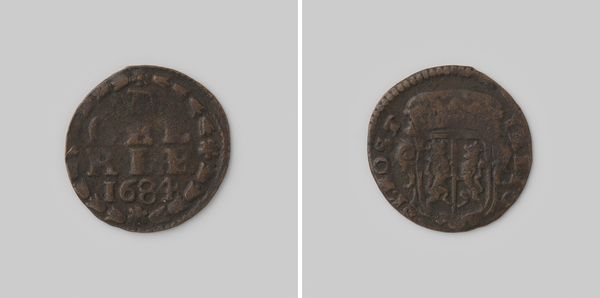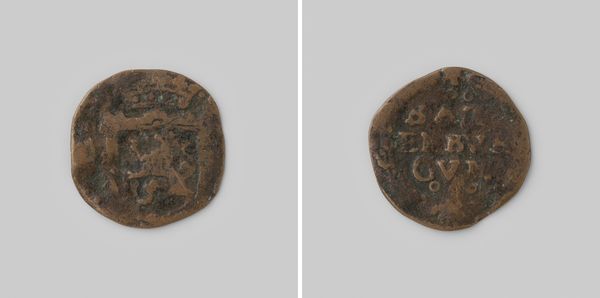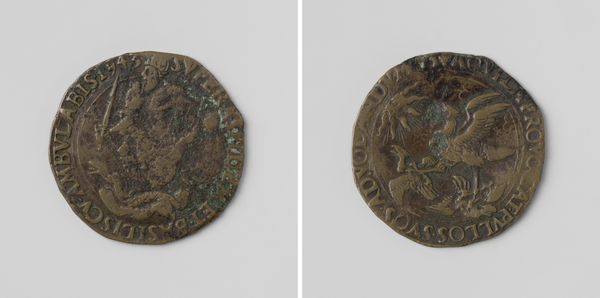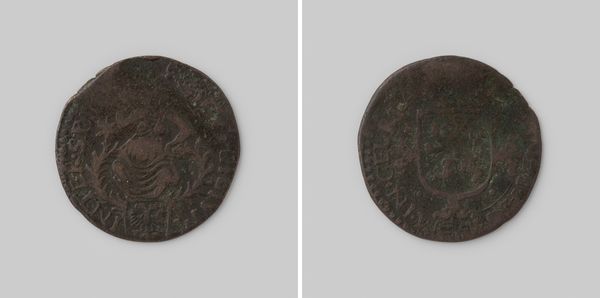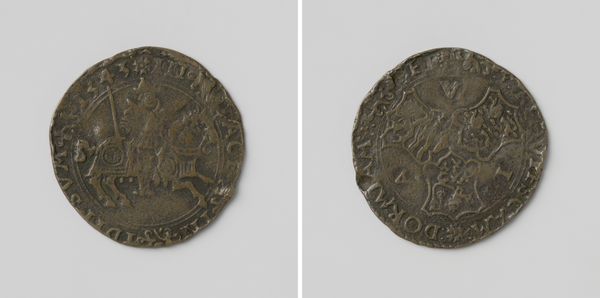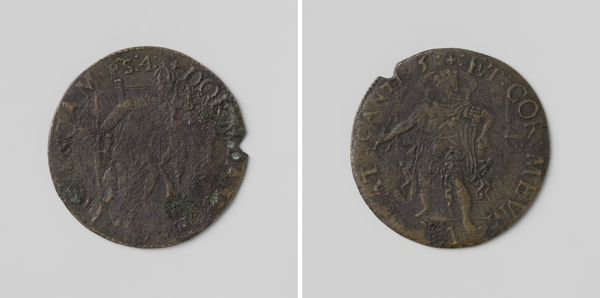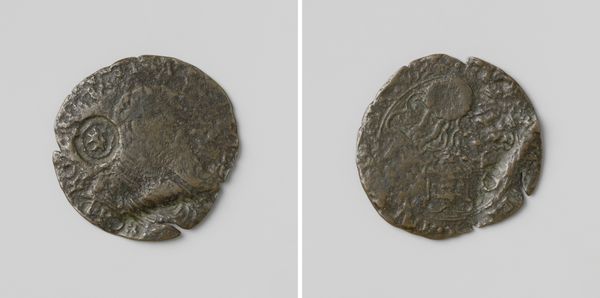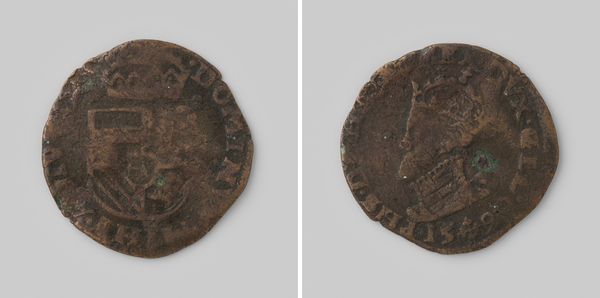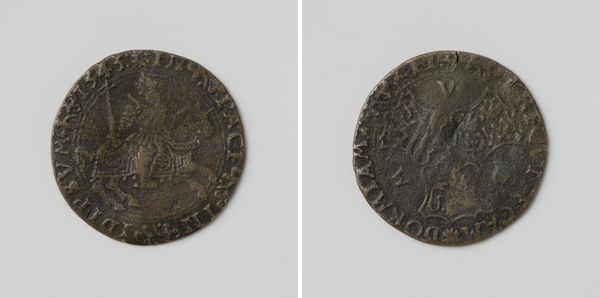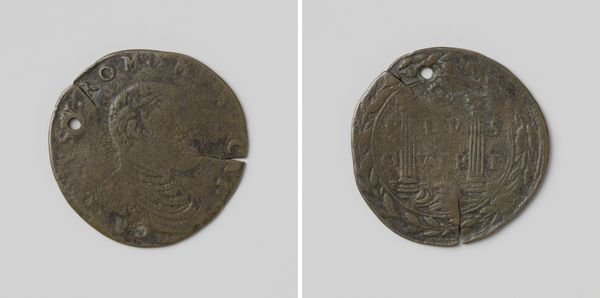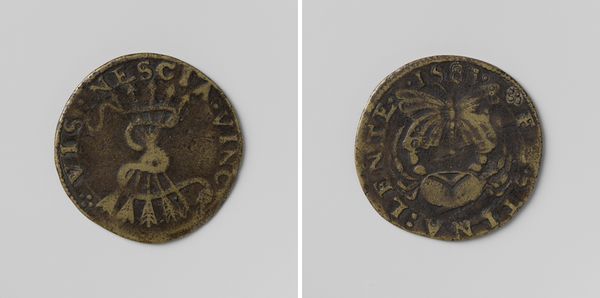
print, metal, relief, sculpture
# print
#
metal
#
sculpture
#
relief
#
ancient-mediterranean
#
sculpture
#
islamic-art
Dimensions: diameter 2.0 cm, weight 1.61 gr
Copyright: Rijks Museum: Open Domain
Curator: Looking at this image, my initial reaction is one of austerity and a sort of worn history. The texture and subdued color give the object a tangible, almost visceral quality. Editor: You’re right, it certainly carries its history. This is a Dutch medal in the name of Philips II, dating from 1573. It offers us a fascinating insight into the politics of the time. The relief work is rendered in metal and preserves rich iconography for us. Curator: Philips II. The resonances there are clear - power, colonialism, the Reformation. This piece, though small, becomes a flashpoint for major historical shifts and can embody various elements of identity and control from gender and class perspectives. I see echoes of current debates around representation and monuments here. Editor: Absolutely. Medals like this served a crucial role in projecting power and disseminating information. This specific medal was produced by the province of Holland, which provides valuable insight into how that specific region navigated its relationship with the Spanish crown. The lion of Holland on one side speaks to local identity. Curator: I agree. The controlled symbolism becomes a visual tool of propaganda and nation-building. But also, considering the act of holding and exchanging it - how can its function as currency inform our understanding of its use? In which scenarios did those coins become symbolic for power struggles within and between societal layers? Editor: I believe that these "Hollandse penningen," medals as we refer to them now, circulated as actual currency at the time of its minting. The images would reaffirm the power dynamics and signal resistance to foreign governance as trade would commence in the local markets. It’s a stark reminder of the intricate connections between art, power, and everyday life. Curator: It makes me wonder about the perspectives of marginalized people living in the margins. We see symbols, images, power struggles - but what was this like from their lived point of view? Editor: That’s a key question to continually bring up when examining historical artifacts. What can a coin really tell us of someone's day-to-day struggle under the political upheaval that defined this time in the Netherlands? Thank you, this exchange has provided me with so many things to consider regarding its impact.
Comments
No comments
Be the first to comment and join the conversation on the ultimate creative platform.
